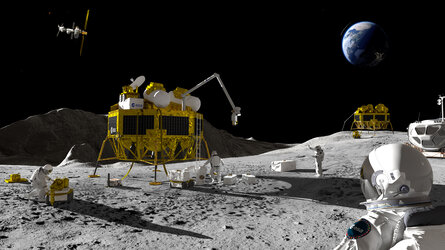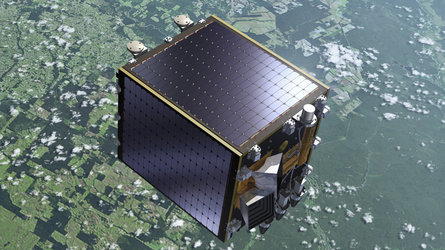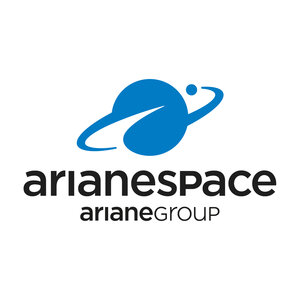When Proba-V met Vega
The Proba-V satellite and its two fellow passengers inside their shared protective fairing are carefully lowered onto the upper stage of their Vega launcher.
The addition of this ‘upper composite’ occurred on 20 April, at the top of the mobile tower used for assembling Vega rockets.
Proba-V sits atop the Vespa secondary payload adapter that holds Vietnam’s VNREDSat-1 Earth observation satellite and the ESTCube-1 Estonian student nanosatellite inside, all enclosed within the fairing.
The composite had been moved to the Vega launch pad the previous night, then carefully hoisted up to the top level.
Once the rocket was completed in this way, the tower was retracted from the pad to allow a full checkout to proceed, preparing for a launch scheduled for 02:06:31 GMT on 4 May (04:06:31 CEST 4 May; 23:06:31 local time 3 May).
Proba-V will be the first of the three satellites released from the upper stage. Occupying less than a cubic metre, it is a miniaturised ESA satellite tasked with a full-scale mission: to map land cover and vegetation across the entire planet every two days.
This new, advanced version of the Vegetation imager is the latest in a series already in service on France’s full-sized Spot-4 and Spot-5 satellites, which have been observing Earth since 1998.
The minisatellite will provide data to the imager’s worldwide user community of scientists and service providers as soon as it is commissioned in orbit.
This second flight marks the start of the Vega Research and Technology Accompaniment programme, or VERTA, to demonstrate the flexibility and versatility of the vehicle. At a planned minimum of two launches per year, the programme will allow the smooth transition of Vega into commercial exploitation.















 Germany
Germany
 Austria
Austria
 Belgium
Belgium
 Denmark
Denmark
 Spain
Spain
 Estonia
Estonia
 Finland
Finland
 France
France
 Greece
Greece
 Hungary
Hungary
 Ireland
Ireland
 Italy
Italy
 Luxembourg
Luxembourg
 Norway
Norway
 The Netherlands
The Netherlands
 Poland
Poland
 Portugal
Portugal
 Czechia
Czechia
 Romania
Romania
 United Kingdom
United Kingdom
 Slovenia
Slovenia
 Sweden
Sweden
 Switzerland
Switzerland




































